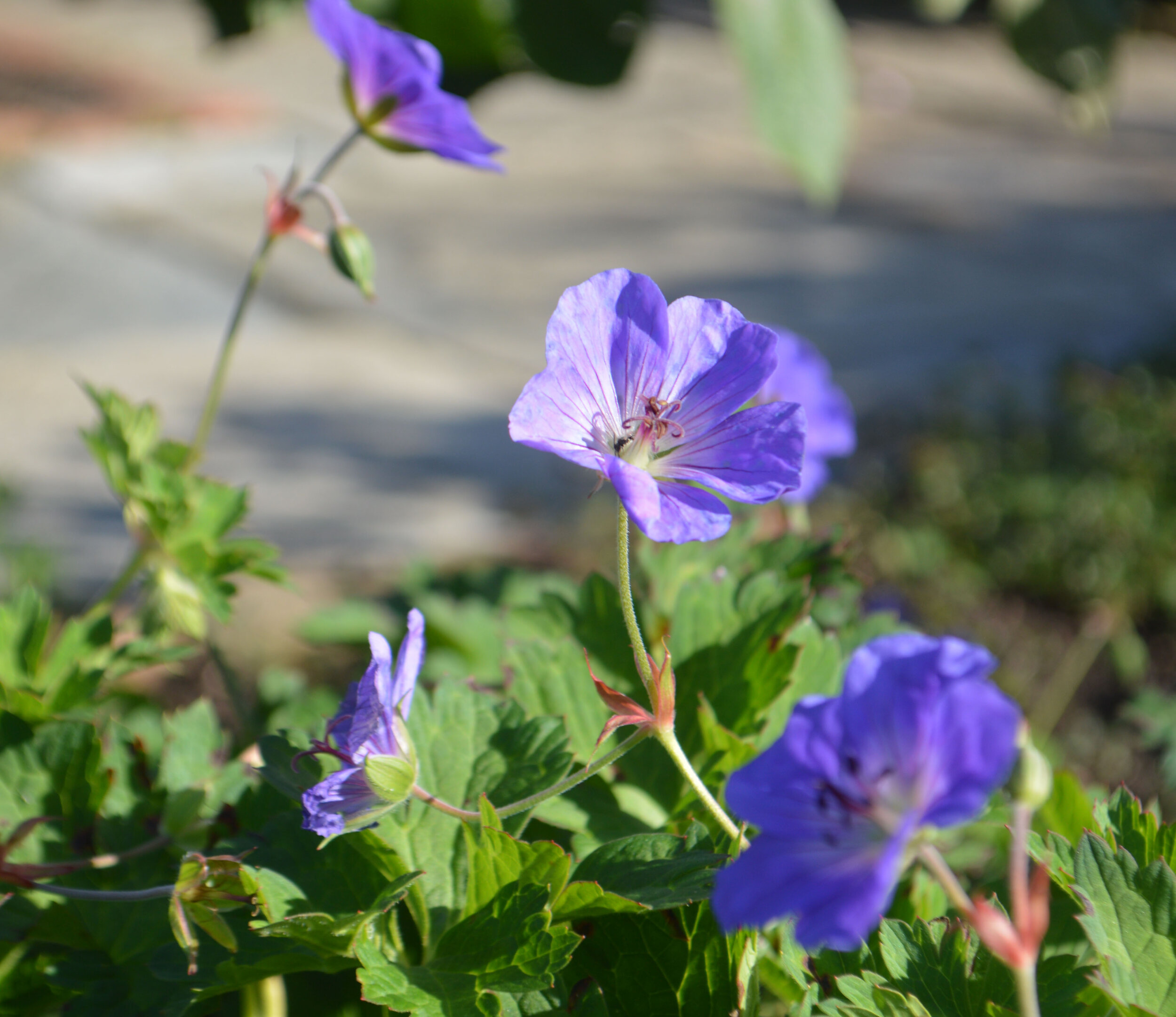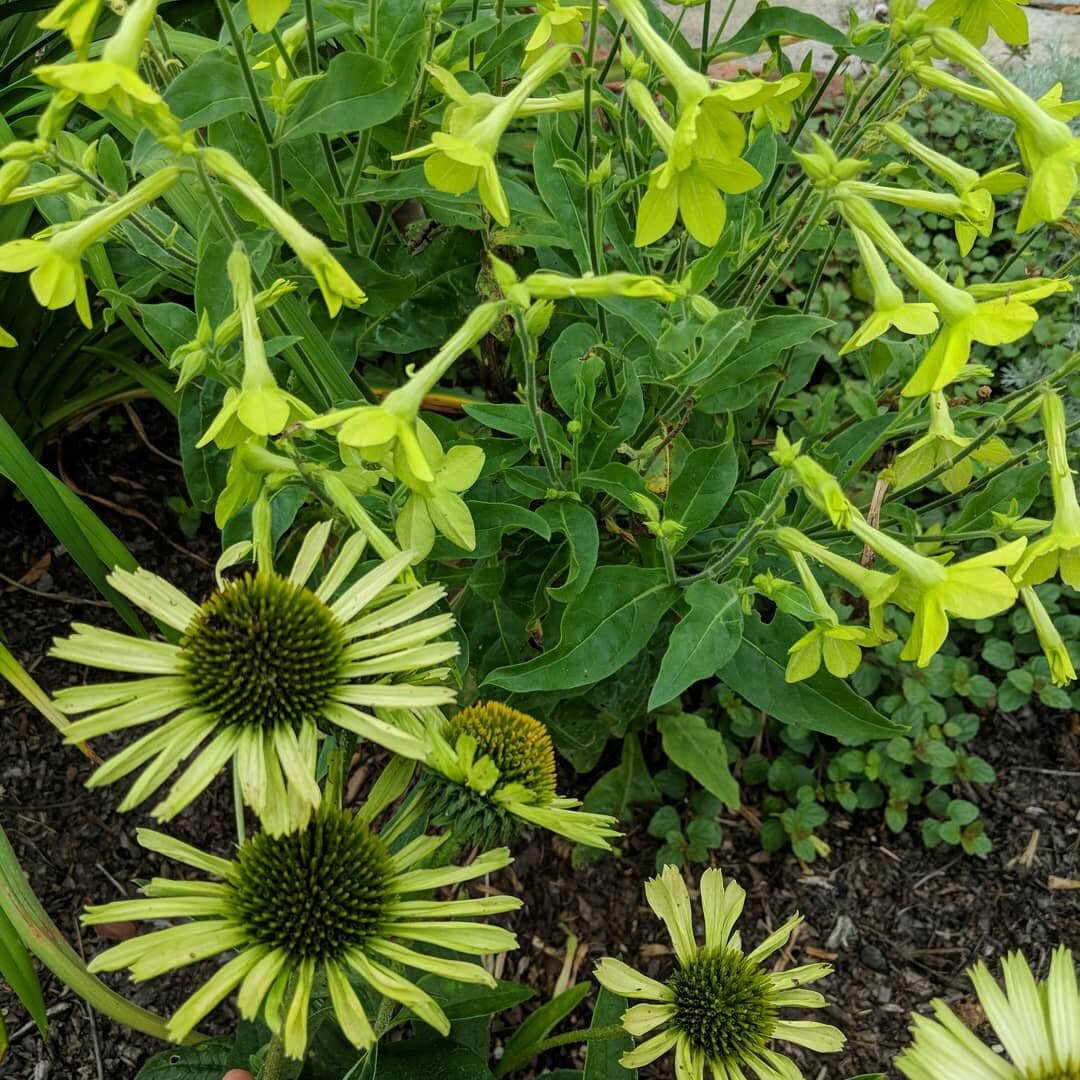Native Flowers for the Late-Season Garden
Emily Ellis
Oak Spring’s vibrant walled garden, an ever-changing palette of texture and color, always feels alive. It seems particularly so in September, when butterflies and bees descend on the colorful late-season blooms.
“(Gardens) follow the cycle of all living things - never remaining the same.
”
Late summer to early fall gardens are particularly important for pollinators like butterflies, since some species migrate south as the weather begins to cool. Oak Spring’s garden, carefully designed by Bunny Mellon to remain diverse and lush throughout the seasons, has been a valuable “rest stop” for bees and butterflies for decades, and its stunning native flowers and native cultivars are among the most attractive to pollinators. Near the formal garden, these insects also enjoy the wildflowers we grow in our native meadows and other areas around the property.
Scroll down to read about several flower varieties - all lovely, low-maintenance, and pollinator favorites - that are currently spilling from our garden beds.
Blue Sage (Salvia azurea)
Blue sage grows across one of the pathways in the walled garden.
Bunny Mellon was fond of blue flowers, and our gardeners ensure that there is a variety blooming in the formal garden throughout the seasons. Blue Sage, with its cobalt flowers and silverly-green tangles of foliage, is a particularly wonderful addition to an early fall garden, bringing a touch of cool color to a palette dominated by autumnal reds and yellows. At Oak Spring, we let it spill out onto the pathways to create the casual style that Mrs. Mellon loved. With nearly 1,000 species, salvia is the largest genus in the mint family. Blue Sage, which is native to Midwestern prairies, is a particular favorite of pollinators. While native bumblebees are too big to fit inside the blue tubular flowers, they instead cling to the flower and bite the neck of it near the base, drinking the nectar from the hole they make.
Helianthus annuus ‘lemon queen’
Helianthus 'Lemon Queen' brightens the wall beds.
A striking native hybrid found in the Midwest, ‘Lemon Queen’ grows in a dense patch of soft yellow flowers that can reach up to 8 feet in height. A winner of the Award of Merit from the Royal Horticultural Society, it will brighten your garden for up to two months and is attractive to bees, hummingbirds, and butterflies, which are drawn to the bright color. If those weren’t enough reasons to love this delicate sunflower, deer and rabbits stay away from it!
Blue mistflower (Conoclinium coelestinum)
Mistflower flanks the mail pathway in the garden.
Mistflower is a summer to fall-blooming herbaceous perennial that is native to the Eastern U.S. At Oak Spring, it is found in our wild meadows and scattered throughout our formal garden. Despite the relatively small size of its bushy violet-hued flowers, it is nectar-rich and a wonderful food source for pollinators, attracting bees and smaller butterflies like long-tongued skippers. It also provides food for several moth caterpillars.
Symphyotrichum (american Asters)
Pillowy ‘snow flurry’ creeps over a stone path.
‘Wood’s Pink’ brightens up late afternoon shadows.
Aster is no longer the genus for most fall blooming beauties we call asters. Aster species from Europe and Asia remain as Aster, like Aster amellus. However, many of our fall blooming Aster species and hybrids from North America are now called Symphyotrichum - far more of a mouthful!
Tiny white ‘Snow Flurry’ and delicate ‘Wood’s Pink’ are among the North American cultivars that bloom in the walled garden this time of year, along with 'Wood's Blue' and 'Bluebird'. Symphyotrichum novae angliae or New England Aster (also known as Michaelmas Daisy) is not a cultivar and is also grown in the garden.
Symphyotrichum grows in dense clumps, making them a wonderful choice for borders, and are a must for a pollinator garden. They support most species of butterflies, moths, and bees, which flit easily across the densely packed blooms; deer and rabbits also avoid them.
Cranesbill Geranium
Not to be confused with pelargoniums, Cranesbill or Hardy Geraniums begin blooming in the spring and can last until the fall, bringing their soft, pink-purple hues to garden beds across the seasons. They are found growing wild throughout the Eastern and Midwestern states, and can thrive in sunny and shady locations, making them a great choice for a woodland garden as well.
Cranesbill geranium from “Wild Flowers of Georgetown, D.C.” by Rebecca and Carolina Nourse (1856). From the Oak Spring Garden Library.
Rudbeckia (Coneflowers)
Celosia 'Flamingo', Blue Mist Flower and Rudbeckia 'Henry Eilers' herald the autumn in the walled garden.
The genus Rudbeckia comprises a variety of species named for their raised centers, including Black-Eyed Susans, which blanket meadows and roadsides in gold in the summer and early fall. One of the distinctive Rudbeckia varieties that sprouts in the walled garden is the Midwestern 'Henry Eilers' (Sweet Coneflower). The narrow, cupped petals of Sweet Coneflower give it a distinctive appearance. We also grow 'Prairie Sun', 'Cappuccino', 'Chim Chiminee', all of which make wonderful cut flowers.
Echinacea
Echinacea purpurea.
Nicotiana 'Lime Green' and 'Green Jewel' echinacea grows in the square garden.
Purple Coneflowers (Echinacea purpurea ) were a favorite flower of Bunny Mellon; at Oak Spring, we grow both the purple and stunning ‘Green Jewel’ varieties in the walled garden. Bunny Mellon once said that green blooms were “a mystery like true love that wants to hide but is betrayed by its own joy,” a description that can certainly apply to the unusual green variety. In addition to 'Green Jewel', we also grow 'White Swan' and 'Mellow Yellow', all of which were developed from the straight, purple species.
Found in the meadows and woodlands of the Southeastern and Midwestern states, echinacea is fragrant and nectar-rich, drawing in pollinators. Leaving the seed heads after bloom will also provide food for songbirds in the colder months. In addition to its beauty, echinacea also has a variety of medicinal properties and is believed by researchers to shorten the duration of the common cold - all the more reason to include it in your late-season garden.
Gardening for Bees
While the native plants and native cultivars we grow in and around our garden are wonderful for attracting native pollinators, which have evolved alongside the native flowering plants they depend on the most for food, Oak Spring’s gardens and landscapes also support the several European honey bee hives we keep on the site. Assistant gardener Jordan, an experienced beekeeper who helps care for Oak Spring’s hives, shared her thoughts on plants that bees will love throughout the seasons. All of the plants listed below are grown in and near Oak Spring’s formal garden.
A bumblebee crawls over a Japanese anemone in Oak Spring’s formal garden.
Single flowering plants are better for your "bee garden". Plants that are over-hybridized and showy don't produce much nectar, so good plants are usually straight species.
When selecting plants for you garden, imagine seeing the flowers from a bee’s perspective. Petals literally act as the runway lights for pollinators. Think about a helicopter landing on a roof: it usually lands on a bullseye. That bullseye for bees is the clump of tiny nectar-producing reproductive organs of the plant. Bees tend to go for plants with a very obvious bullseye, such as a daisy, with its obvious yellow center ringed with bright white petals.
A surprising amount of what I plant especially for bees can also be used as food for humans, including herbs like mint, dill, and fennel - an added bonus for gardeners! You'll see a few examples in the lists below.
Spring/late spring:
Daisies, marigolds, phacelia, borage, love-in-a-mist, and cosmos (not the double flowering variety) are great choices, as are lavender, mint, catmint, common mallow, lilac and yarrow.
Summer:
One of Jordan’s bees alights on a basil flower in home garden (notice the bright red pollen on its leg!)
Sunflowers and daisies like shasta and montauk daisy are bee favorites. All basil varieties are great choices; I have the best success with holy basil. My bees go crazy for it every year, and you can get about three flushes of flowers out of it if you chop the dead blooms off. Some of mine is still flowering now and feeding my bees. Nepata (catmint), coneflower, rudbeckia, joe pye weed, chives, calendula, fennel, dill, and hostas are also wonderful for bees. Your bees will also appreciate it if you allow your clover and dandelions to bloom in the summer (just don't walk around barefoot!)
Berry plants are also winners for bees because the food source is usually concentrated in one space and is easier for bees to hop around on. Strawberries, raspberries, blackberries, and blueberries are great choices.
Happy honey bee, happy aster!
Fall:
Bees go wild for goldenrod, all aster varieties (novae engliae or New England is my preferred), sedums, fall flowering crocus, single flowering zinnias, calendula, and anemones.
Want to learn more about bees and their favorite flowers? This site has a handy chart that helps you identify honey bee flower sources by the color of the pollen they collect on their legs. Happy beekeeping!
Special thanks to the gardening team for their help and photos!














